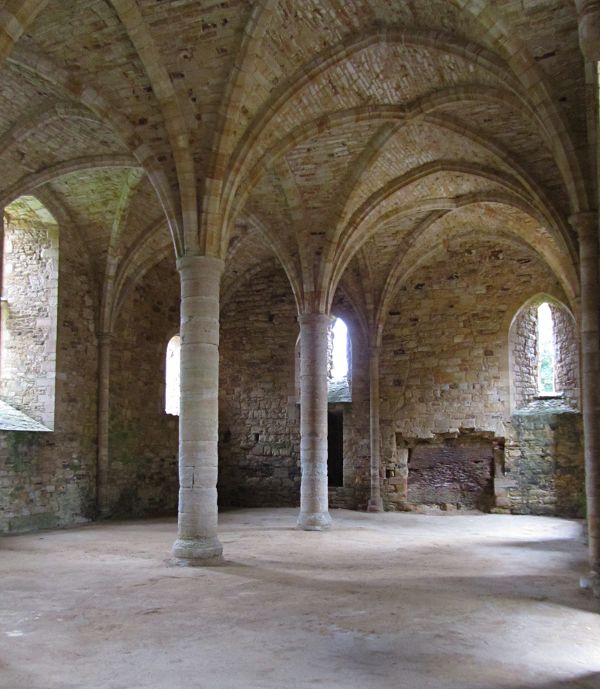Saturday, October 29th, 2011
In early October, on one of the first chilly mornings that warmed into a fantastic weekend, we returned to Alligator Lake Park. It was also our first adventure with my new lens hood. Useful accessory.
Neither of the photos in my bird books show the prominent yellow eye ring, but we believe this is a yellow-billed cuckoo. It was a very curious bird, like the mockingbirds, which means it was actually facing me instead of the usual bird butt poses I end up with in my pictures.
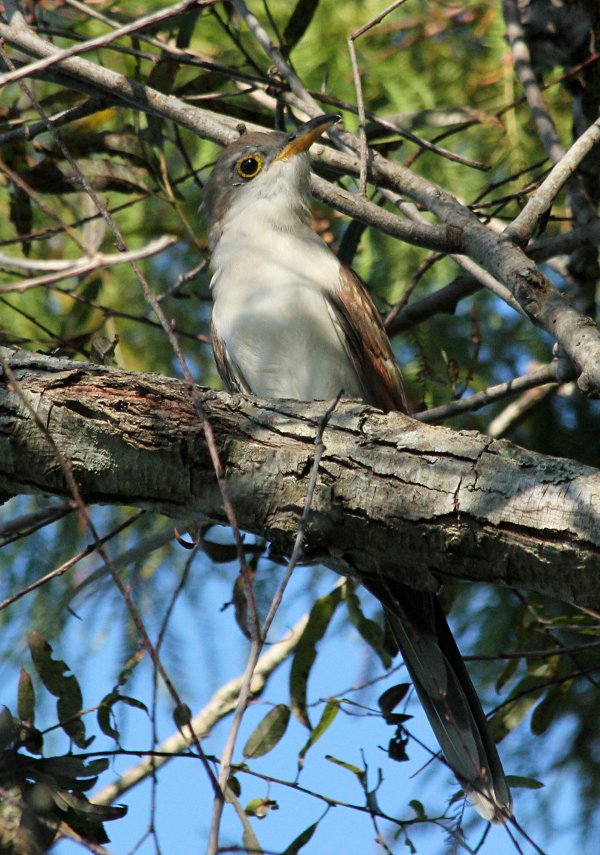
The coots were not present in huge numbers as we’ve seen on previous visits, but there were several pied-billed grebes.

Viceroys (below) and gulf fritillaries were the most prevalent butterflies that we saw.
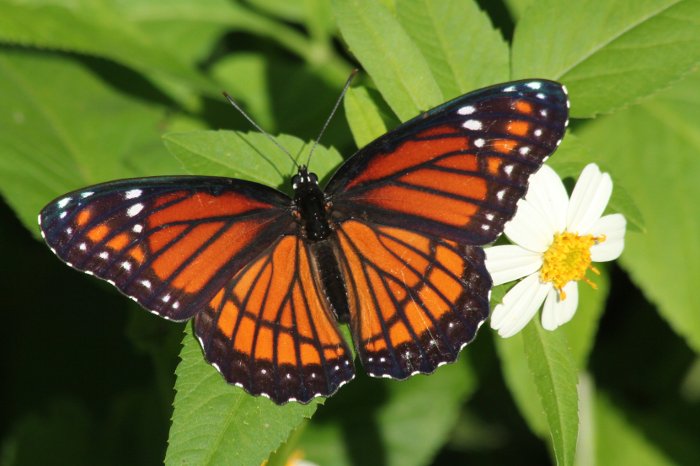
Many pollinators were interested in these flowers. I believe they are beggar-ticks.
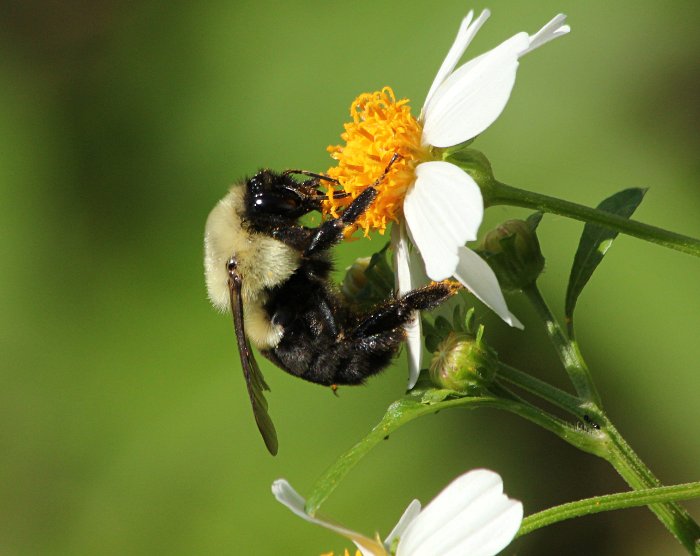
A checkered skipper.
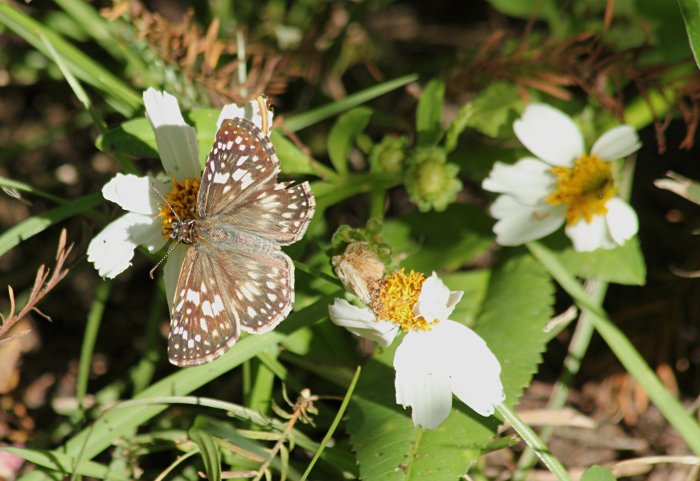
There were many pondhawks warming up or flying about. This larger dragonfly, which hovered for a few moments over the path, seemed to be hunting some of them.
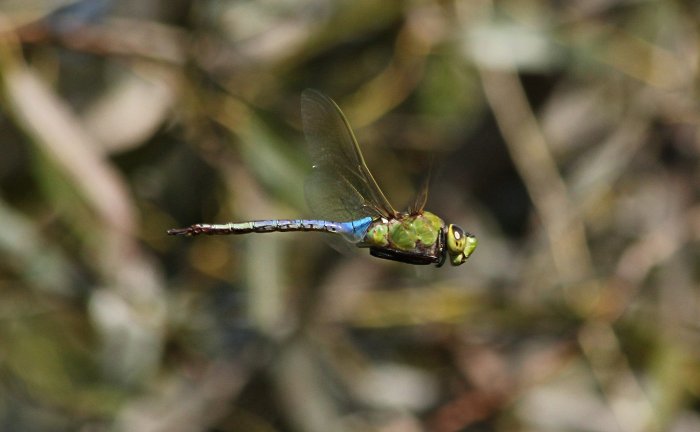
Mike took this picture of the same species, common green darner.
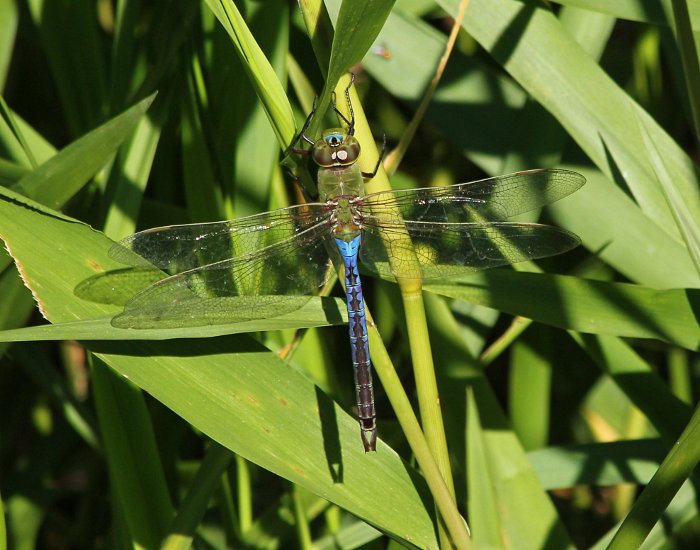
When we got back to the car, we found two mockingbirds fighting. There was a little blood, but both flew away just fine after their dispute was resolved.
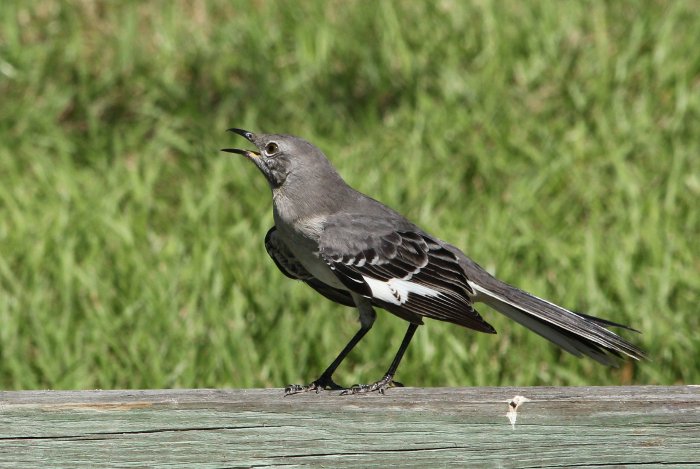
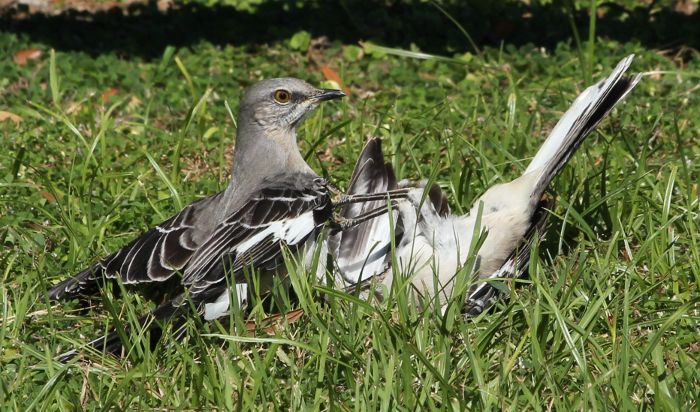
Thursday, October 27th, 2011
In the latter part of September, right after a rain, we visited Weedon Island Preserve. Near the first trail entrance, we saw two osprey in a dead tree.

While I was taking pictures of the osprey, Mike noticed a little frog hidden in the weeds beside the road. I believe this was the first frog we’d seen at this park. Mike took a picture so we could try to identify it later. We started down the trail and almost immediately found another much larger frog. Mike took this picture as well, in between the fairly dense underbrush.
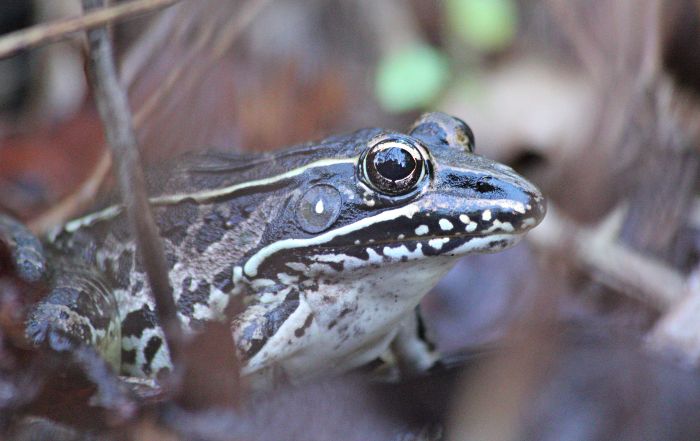
It turns out that this day, Weedon was overrun by these leopard frogs. Most of them we only noticed as they made huge leaps into the water beside the path. And we must have only noticed a fraction of the true number of frogs surrounding us.
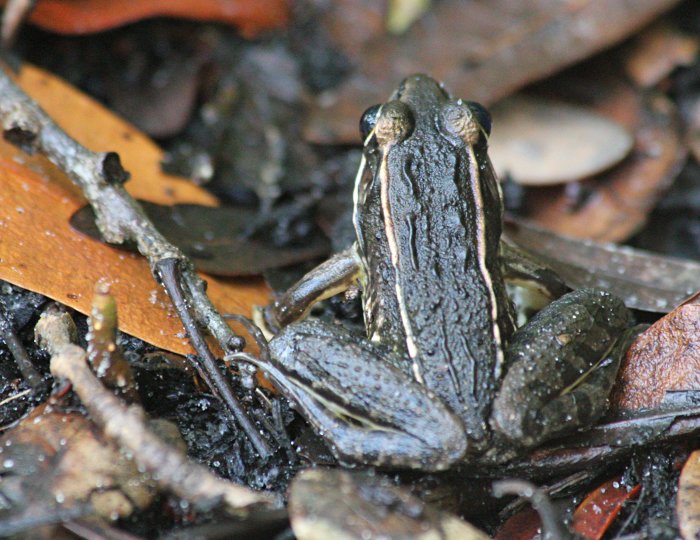
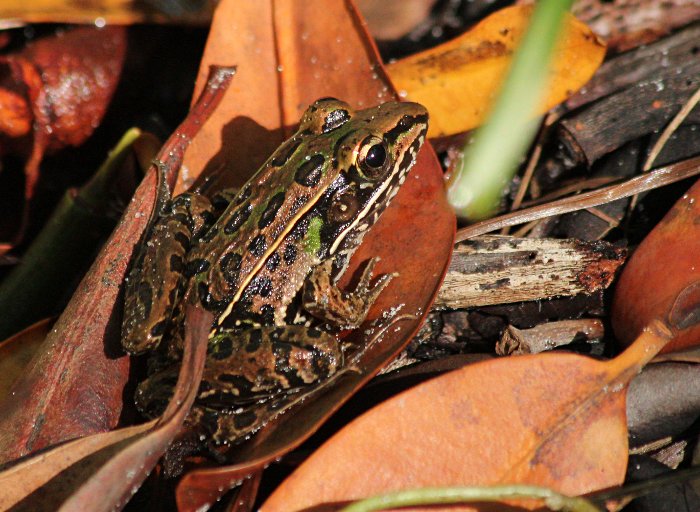
We saw two of these immature yellow crowned night herons.
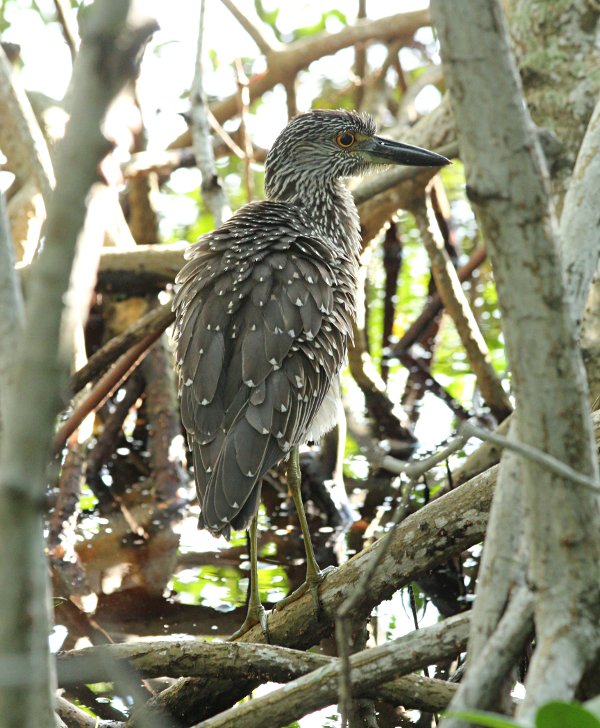
Bill, the brave mangrove tree crab, pausing on the boardwalk. Usually, these dart out of sight while we are quite far away, and even when you do see them, they usually are in very low light areas.
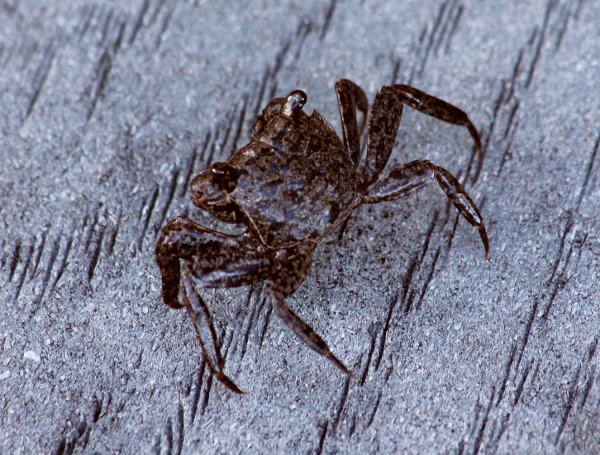
A green anole with blue dusted skin.
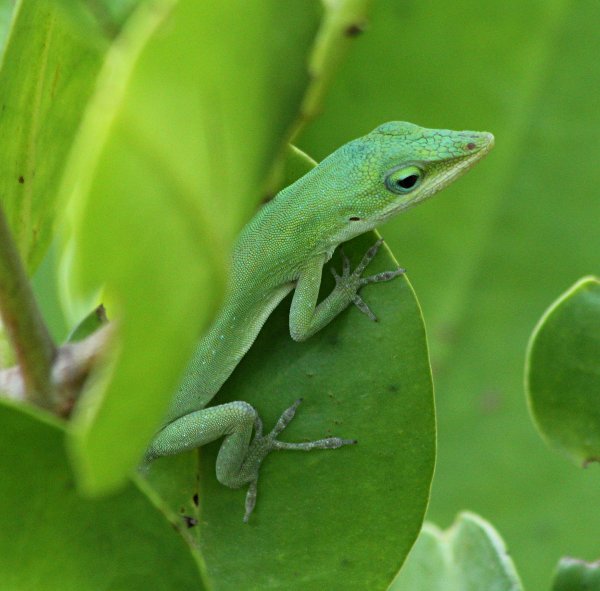
Sunday, September 25th, 2011
On our latest trip to Sawgrass, in mid September, we saw lots of juvenile alligators.
Underneath one of the bridges across the canal, an oak leaf drifted past this tiny alligator
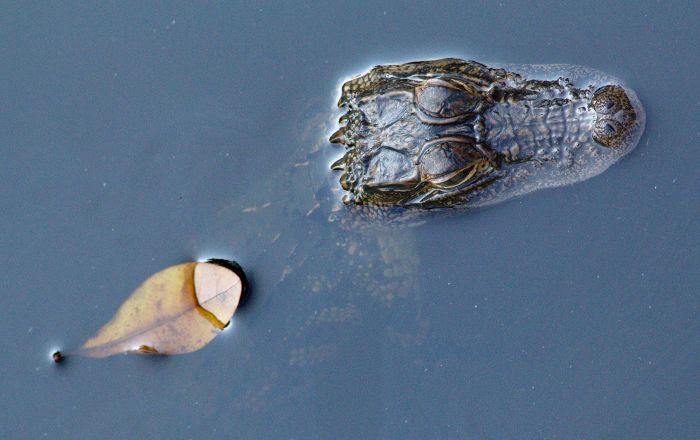
And at the shore another alligator was basking. You can see its foot prints in the mud.
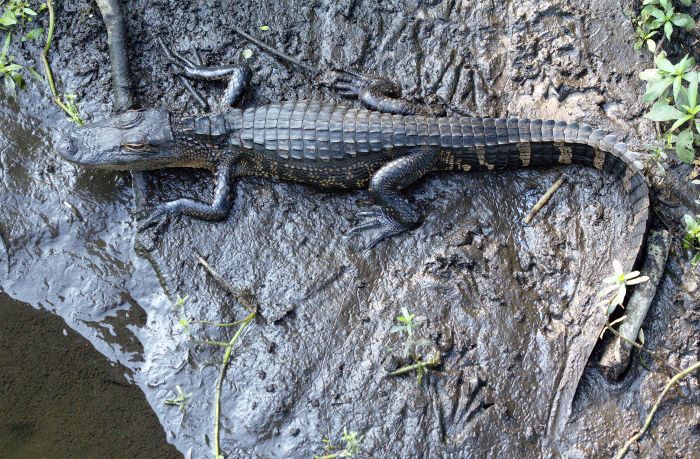
On a previous visit, we’d seen a large adult (the mother?) alligator where this little baby was.
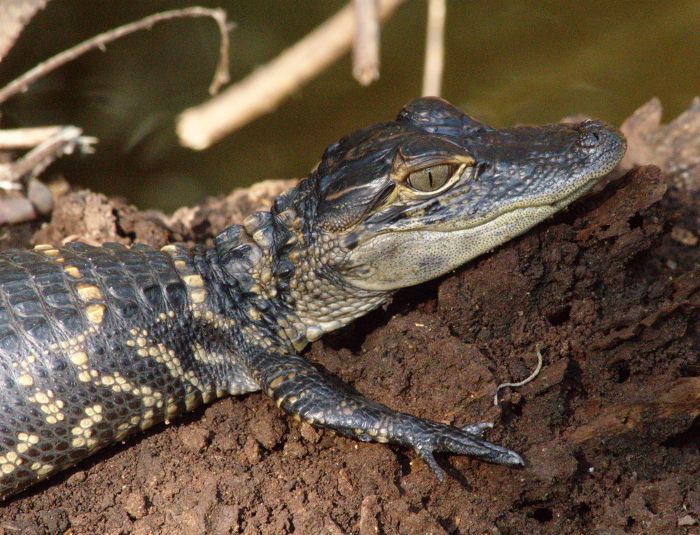
At the overlook where this picture was taken, there were a bunch of sunfish, tilapia and turtles. Here, a small softshell turtle was trying to climb up on top of the larger red-eared slider
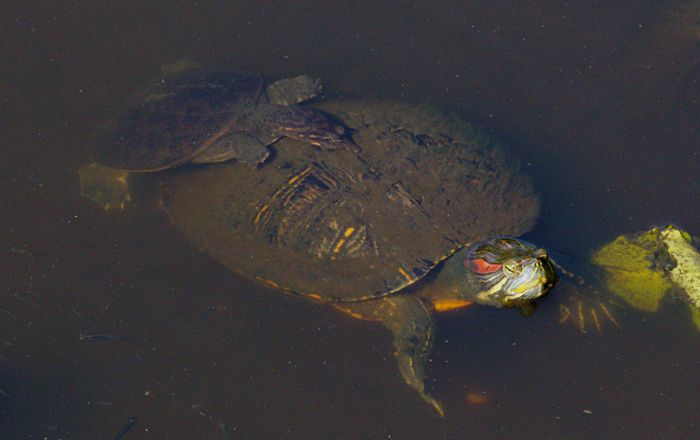
We think this is a horace’s dusky wing
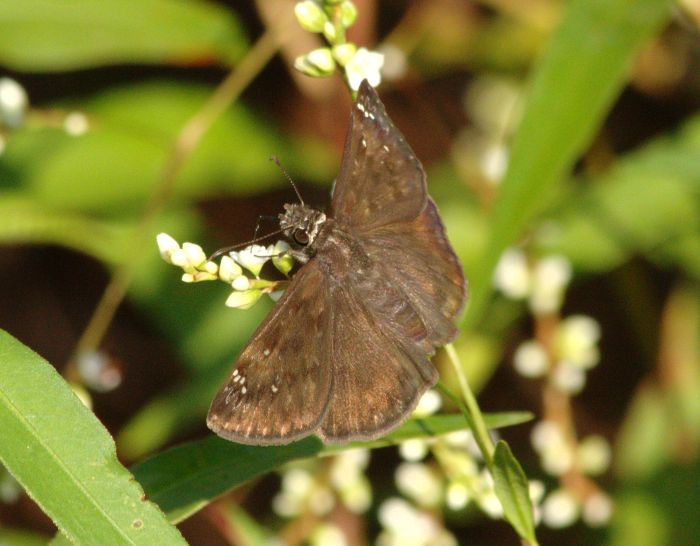
An old viceroy
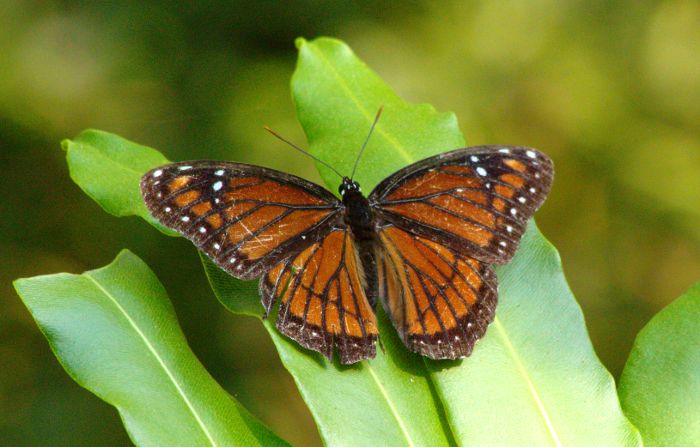
Saturday, September 24th, 2011
We returned to Brooker Creek over Labor Day weekend. The park was open this time, but we didn’t last long. The mosquitoes were still hovering even after applying anti-bug juice, and after the boardwalk ended, we didn’t make it far before we reached impassible water submerging the path.
A cardinal flower next to the boardwalk.
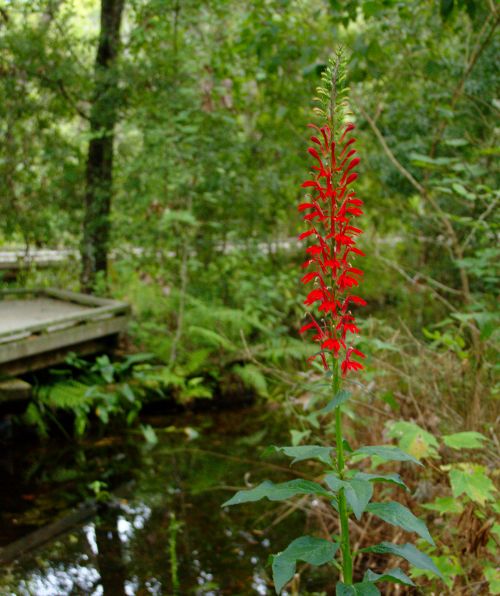
On our way out, a baby gopher tortoise was very slowly crossing the road. We stopped and stood over it, waiting for it to come out of hiding and continue on its way, as it would have easily been run over. Another park visitor stopped and took pictures with us.
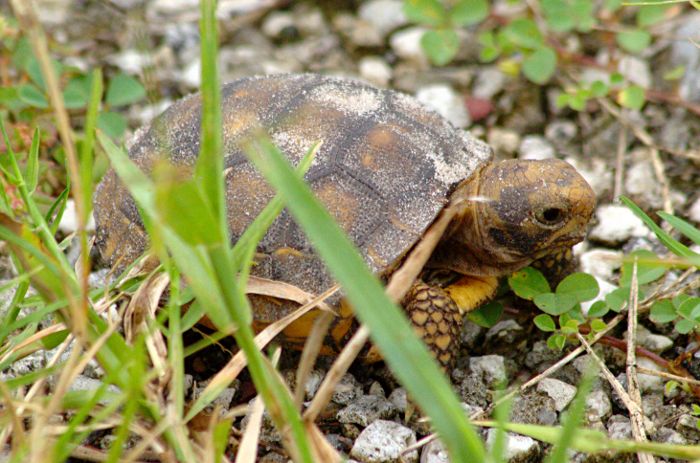
Saturday, September 24th, 2011
This is from the end of July. A black and yellow garden spider. This one is missing two legs. We watched another one laying down its zigzag pattern on its web.
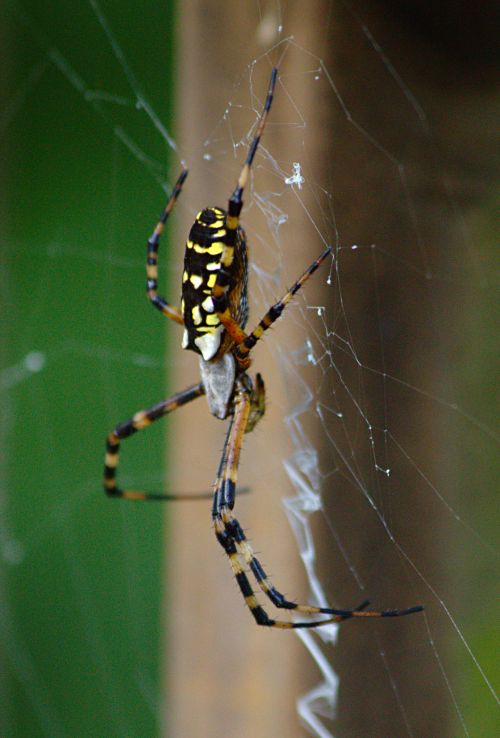
I’m not sure the name of this spider. It was deconstructing its web.
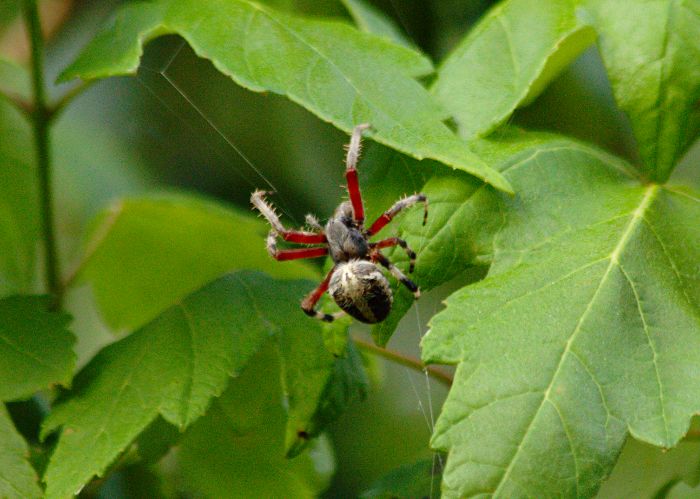
A green tree frog, scootching backwards along the elephant ear leaf.
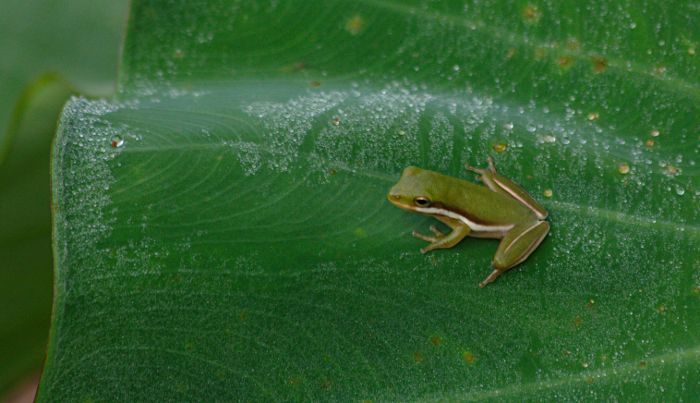
Another of the sulphurs, perhaps an orange-barred
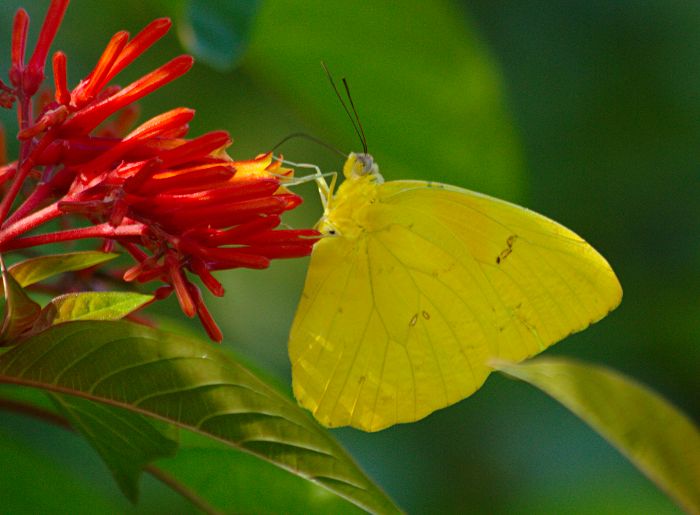
This little snake was on the path along the canal, playing dead. We’re not sure what species it is either. My guess is a southern water snake, but juveniles often look different than the adults, so it could be anything. When you read the species guides, they often differentiate using the underside markings, but that’s of little use to me with a wild animal. They don’t exactly turn over for you just so you can take a picture.

A roseate skimmer. We see them flying over the drainage pond behind the townhome, but I haven’t seen them land out back.
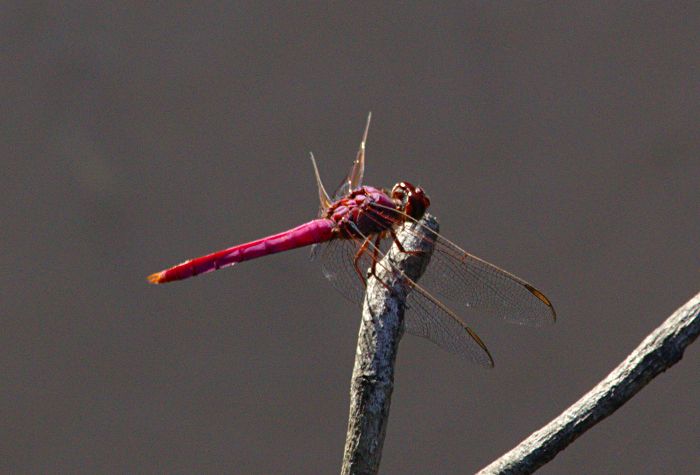
An osprey, feathers ruffled, huge talons.
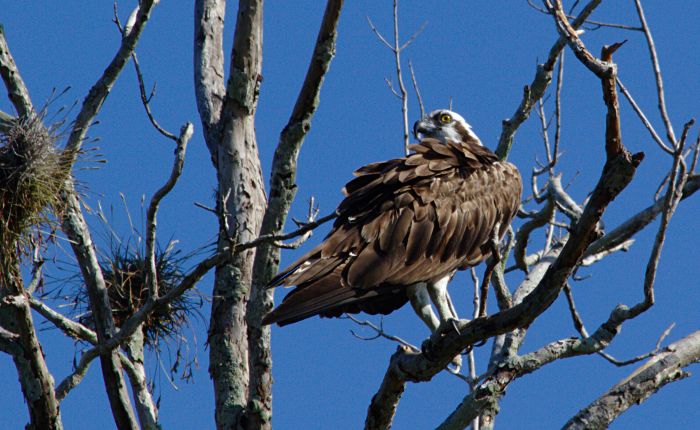
Saturday, September 3rd, 2011
When planning the trip to the UK, I knew that I wanted to see a castle. I found that “castle” can mean quite a few things, however. There are restored castles, furnished, with demonstrations, and guides in period dress. There are castles in various levels of ruin, some with only fragments of stone wall or only earthworks remaining. There are castles that were meant to be lived in, those that were intended to convey the power and might of the owner, and those that were defensive fortresses built in times of war. You can watch developments in architecture and building materials, such as size of windows, by looking at castles from different time periods.
Many of England’s stone castles were refortifications of original wooden Motte-and-bailey structures. Such was the case for Hastings Castle, which was built around the time that William the Conqueror reached England in 1066, and rebuilt in stone in 1070. The cliffs it was built on have eroded, sending the keep and half of the curtain wall into the sea, leaving one of the towers and parts of The Collegiate Church of St. Mary-in-the-Castle.
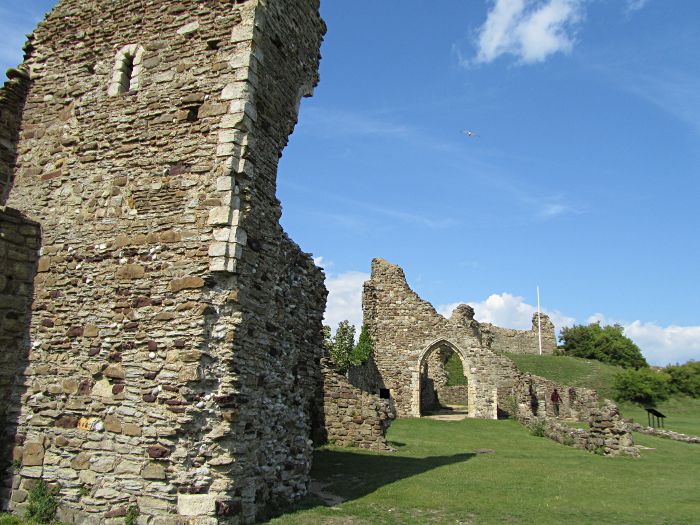
Camber Castle, on the other hand, was built in 1512 – 1514 to defend Rye anchorage, but the river silted up and it was abandoned in 1637. Today it is surrounded by sheep pastures and a nature reserve.
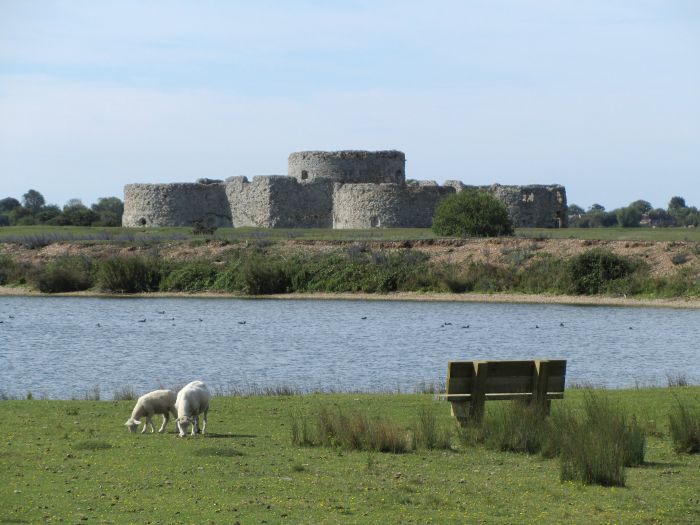
The only way to get to the castle is by footpath. England is criss-crossed by public footpaths that can take you from one coast to the other. These footpaths are often on private property. Walkers are expected to close the gates they walk through, which are helpfully labeled as public rights of way, and respect the owner’s property. This is very contrary to the attitudes of the sprawling United States, where there is no such honor system and the Private Property signs are only ignored by low life hunters that blithely shoot near or at homes.
Here, a footpath on the East Hill of Hastings, follows the cliffs over the sea. The wildest places we saw still seemed somewhat tamed. Everywhere in England, even if it’s been allowed to return to nature now, has been shaped over the centuries by human habitation.
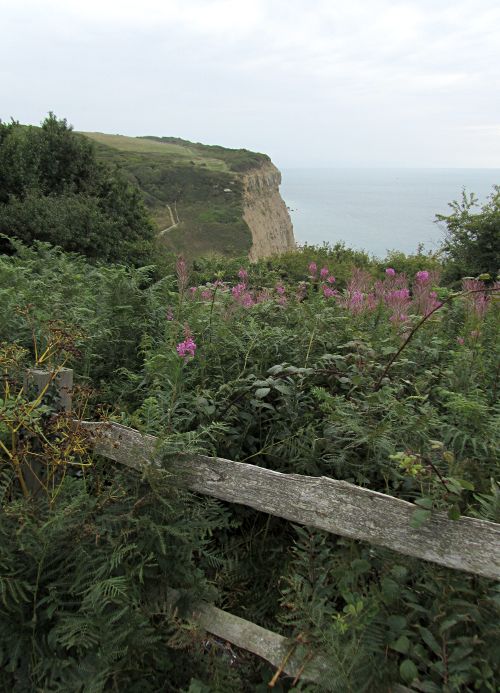
A gatekeeper butterfly.
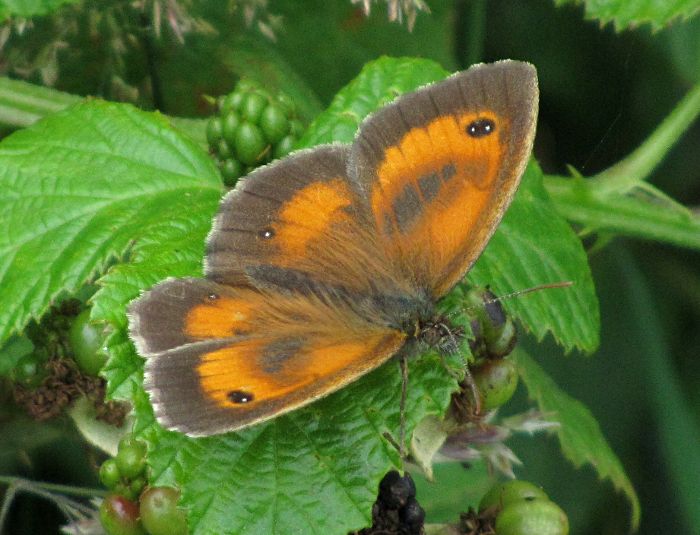
And a six spot burnet moth.
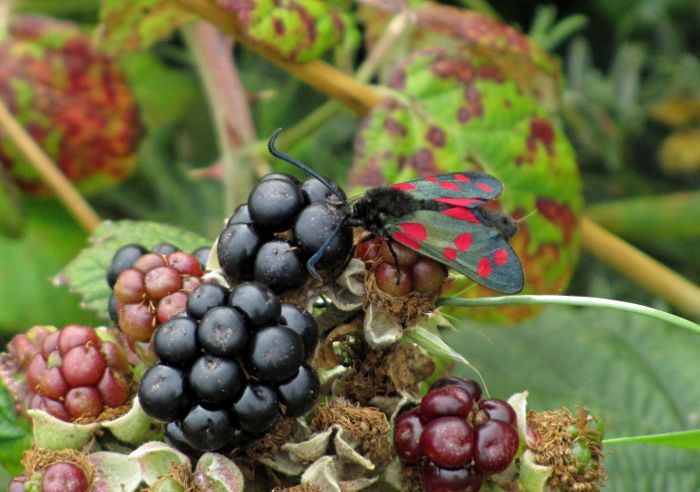
Battle Abbey is at the site where William the Conqueror defeated King Harold, erected by William as penance for the killings during his invasion. The Church of St. Martin, finished around 1094, with its altar on the supposed spot where King Harold fell, was destroyed during the Dissolution of the Monasteries under Henry VIII. The abbey is in ruin but can be explored, while the gatehouse is still in excellent condition, and today houses the gift shop and a small museum.
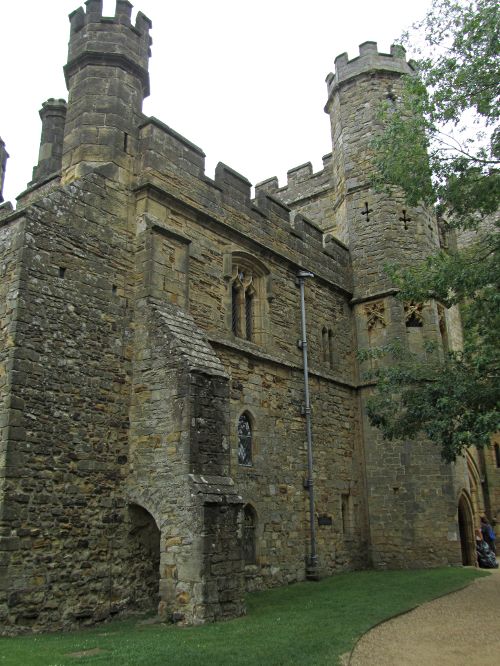
Here are the beautiful arched ceilings in the novice’s room in the abbey.
